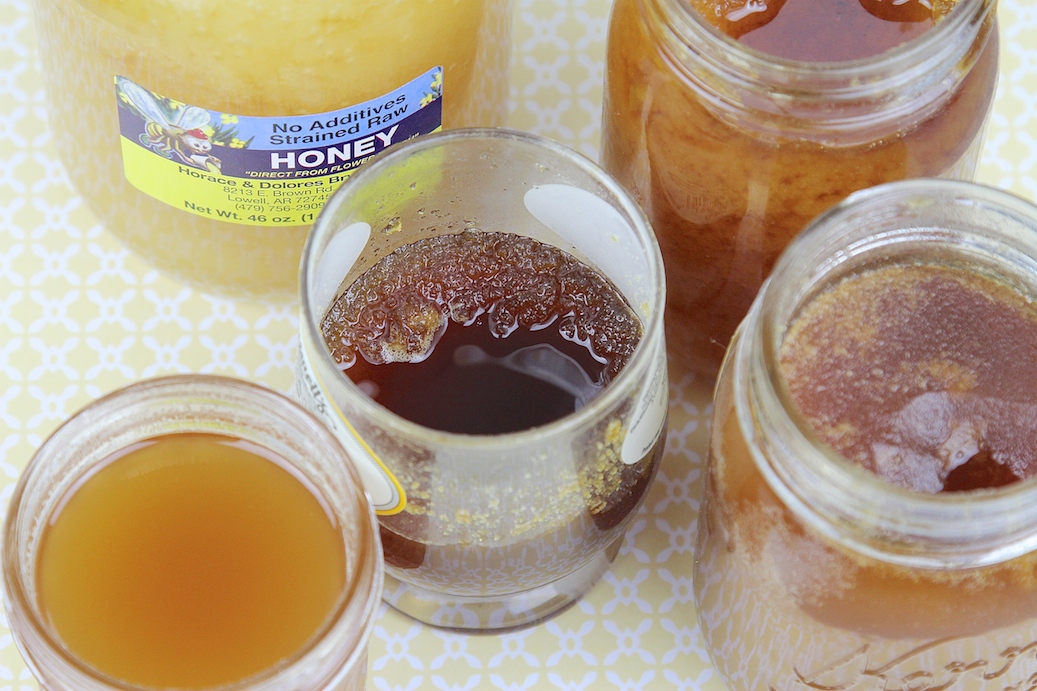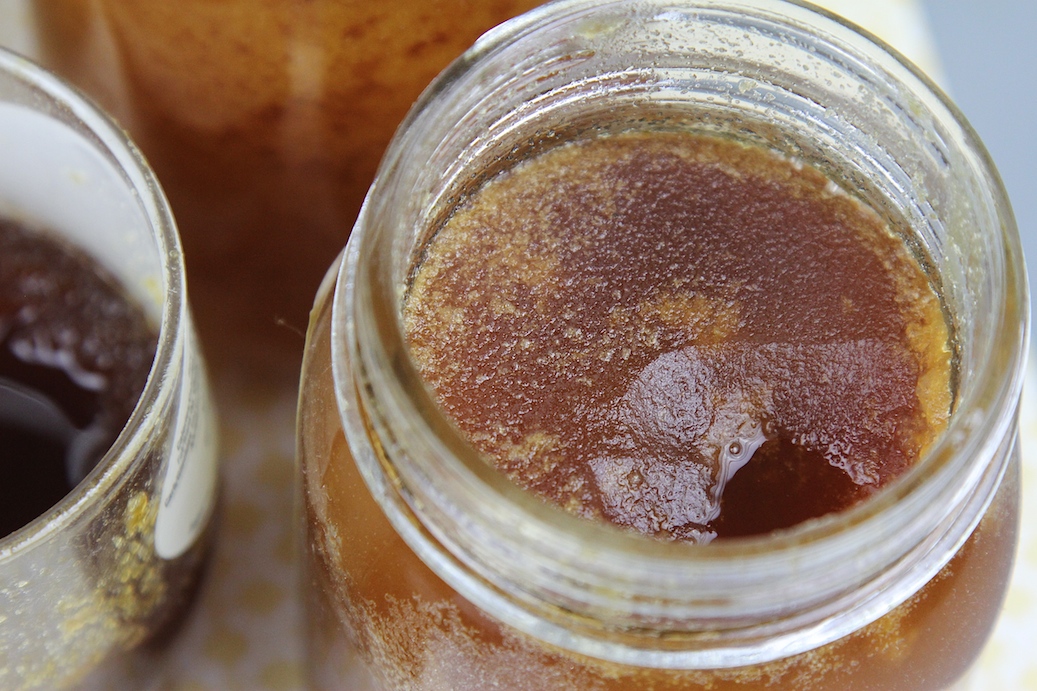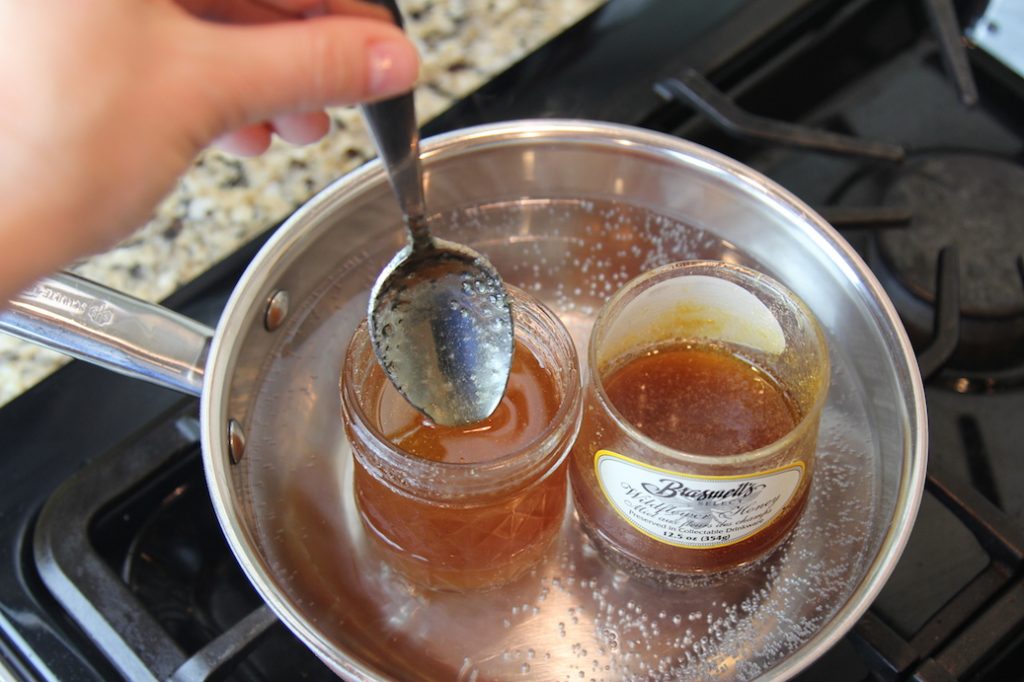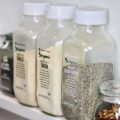Hello Monday.
Monday brings promise of what lies ahead. Sometimes I like to sit and think, “I wonder what will life be like a week from now?” Happily, one week from now I will have a new baby nephew! Talk about a promise of what lies ahead.
By now you know I am a lover of all things to-do-lists. Yep, I am one of those people who will add something to the list that is already done just for the satisfaction of crossing it off. Are you like that? If so, we are kindred souls.
One of the lingering tasks on my to-do-list is to de-crystallize five jars of honey. You see, honey is the number one gift that friends and family gift me.
Honey is my jive.

Now, if only I could just consume one bottle of honey at a time and store the rest. Instead, I open all the bottles and sample at will. It’s almost like a tapas restaurant over here in the nwafoodie kitchen. Only, in place of adorable mini plates of Mediterranean nibbles, we have bottles of honey trumpeting their bloom of colors on the countertops. Are you like that? If so, we are kindred souls.
The only problem with honey is that it can crystallize. However, did you know that crystallized honey really ISN’T a problem? In fact, it is just the OPPOSITE of a problem. It is completely natural and a sign that you have unadulterated honey! Hooray!

The question is, how do you de-crystallize honey? Is it difficult? Will it mess up the honey? Will I still be able to eat multiple jars at once?
The answers? No. No. Yes.
How to de-crystallize honey
Grab a saucepan that is deep enough to handle your jar of honey. To determine this, unscrew the lid of your honey and place in the pan. Fill up the pan with water so that the fill-line meets your honey. It isn’t an exact science. The goal is to make sure water isn’t too high to get in the jar and not too low where it takes forever to heat up the honey.
Next, place the saucepan with the honey on the stove and turn the heat to low. The goal is heating up the jar with a low simmer, not a boil.
Stir and watch the magic unfold before your eyes. My jars took about fifteen minutes to get to the runny consistency I prefer. Turn off the heat and let the water cool before carefully removing the honey jars from the saucepan. Wipe the outside dry and happily store in your pantry.
Silly me. I meant to say… wipe the outside dry and happily consume.
Happy honey days ahead.
Eat well, my friends. Eat well.
Lyndi
PS :: I recommend that you stick with honey that is stored in glass jars. Often plastic containers come from questionable sources and heating them up will compromise your honey. Who wants that? If your honey is in a plastic container, no worries! Simply transfer them to a cute Mason jar and viola! Problem solved.


